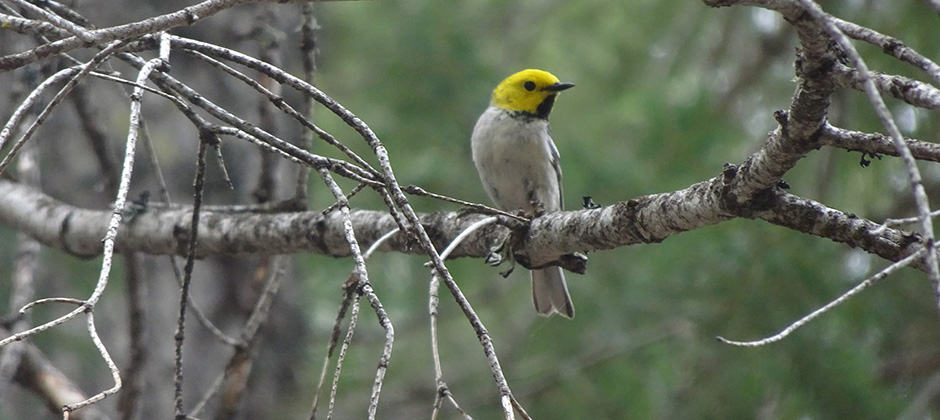Share this article
Wildfires create mixed chorus of warblers
Warblers can develop different song dialects in different forests, but after wildfires, those dialects can converge in an unusual chorus as different populations come together.
That’s the finding of Brett Furnas, a quantitative ecologist and senior environmental scientist with the California Department of Fish and Wildlife and lead author of a recent study on the phenomenon.
For the past 15 years, Furnas has worked on biodiversity monitoring programs looking at population trends for songbirds and other wildlife. Part of those efforts included using audio recordings. But when researchers listened to warblers, they found they had trouble telling apart hermit warblers (Setophaga occidentalis) from black-throated gray warblers (S. nigrescens).
After conducting a project to tell the difference between the two species, Furnas and his colleagues expanded it into a study published in The Auk: Ornithological Advances tuning in to hermit warblers and categorizing the various dialects they heard.
“It’s not unique, but I think hermit warblers have among the most diverse variations in their dialects,” Furnas said.
The researchers sampled mate-attraction songs from 1,588 males across 101 study sites in California between 2009 and 2014. After grouping them into 35 dialects, they looked at what factors were associated with song diversity. They considered things like recent fire history, breeding habitat and the distance between their territories.
Song dialects seemed to be isolated from one another in different forest types, they discovered, a finding that appeared consistent with the idea of cultural drift — isolated populations develop their own unique songs over time.
But multiple dialects sometimes occurred within the same area, Furnas said. He believes fire is likely the cause.
Low intensity fire actually improves their habitat in the long term, he said, but wildfires often cause warblers to abandon their nest sites for a couple years. When they flee, other hermit warblers — with rival dialects — show up.
The results suggest that wildfires and these rival songs can disrupt the uniformity of birdsongs, Furnas said, providing a window to understanding diversity quicker than looking at genetics. They may also suggest ways to help conserve the hermit warbler, he said.
A neotropical migrant, the hermit warbler is found in California, Washington and Oregon. But while it has been hybridizing with the Townshend’s warbler (Setophaga townsendi) in Washington and Oregon, “pure Hermit warbler species refugia may end up being in California,” Furnas said.
The species is not at risk yet, he said, but with climate change and other threats, its summer range may shrink. Understanding its dialects may shed light on its distribution and hint at genetic differences among subpopulations, a facet he’s beginning to study now.
Header Image: A survey of 1,500 hermit warblers in California suggests they develop different songs in different forests, but wildfires lead to some locations having more than one song. Credit: Sarah Noll








